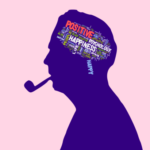Yale Diversity Statistics: An In-Depth Look
What’s Covered:
- Overview of Yale Diversity Statistics
- Cultural Resources at Yale
- Plans to Improve Diversity at Yale
- LGBTQ+ Inclusivity at Yale
- How Diverse and Inclusive is New Haven?
- Is Yale Right for You?
Yale has changed significantly since its founding days, perhaps most notably in its commitment to diversity. Like many other selective private schools, Yale recognizes that a wide-ranging population of scholars not only allows students to engage with a broader range of perspectives but also provides opportunities to traditionally underrepresented and underserved groups.
In this post, we’ll take a deep dive into Yale’s diversity statistics, exploring how the school varies in its representation of racial, ethnic, cultural, geographical, financial, political, and LGBTQ+ backgrounds. Here, we’ll deepen your understanding of the school’s commitment to a well-rounded student body to help you best gauge how at home you’ll feel in New Haven.
Overview of Yale Diversity Statistics
Ethnic Diversity
With a white university-wide enrollment of 35.6%, Yale is diverse. See below for a complete breakdown of the college’s ethnic composition.
|
Student Ethnicity |
Percentage of Students |
|
White |
35.6% |
|
International |
22.3% |
|
Asian |
16.8% |
|
Hispanic of any race |
22.4% |
|
Black/African American |
6.9% |
|
Two or More Races |
5.4% |
|
American Indian or Alaska Native |
<1% |
|
Native Hawaiian or other Pacific Islander |
<1% |
|
Unknown |
1.2% |
For many students, faculty diversity is an important factor as well. With a white faculty population of 62%, Yale’s faculty is moderately diverse.
|
Student Ethnicity |
Percentage of Students |
|
White |
62% |
|
Asian |
21% |
|
Hispanic of any race |
6% |
|
Black/African American |
5% |
|
Two or More Races |
1% |
|
American Indian or Alaska Native |
<1% |
|
Native Hawaiian or other Pacific Islander |
<1% |
|
Unknown |
4% |
Yale’s Faculty Demographics chart showcases aspects of the diversity of its faculty in greater detail, especially in regard to gender, rank, and tenure.
In recent years, Yale has poured $50 million dollars worth of resources into increasing faculty diversity. Yale’s Faculty Development and Diversity Initiative (FEDI) aims to recruit and retain more diverse faculty schoolwide. In 2019, the university expanded FEDI’s budget from $50 million to $85 million, a demonstration of the school’s commitment to recruiting esteemed scholars to help diversify Yale.
Financial Diversity
Yale is need-blind, meaning the applicant’s ability to pay isn’t considered in admissions, even for international students. Yale is also no-loan, meaning that their financial aid offerings are provided so that students are not required to pay back any part of their financial aid award. This is done with the intention of meeting a student’s level of financial need without the burden of crushing student loan debt. Finally, Yale meets 100% demonstrated need for all admitted students regardless of citizenship or immigration status.
According to Yale, 54% of Yale College students receive grants from the university. The average grant from the university is $60,403.
Yale commonly ranks near the top of schools “matched” with first-generation, low-income students through the Questbridge program. In 2022, Yale admitted 66 students through the Questbridge program.
This is great news for low- and mid-income applicants who could use some help paying for a world-class education. However, this does not make Yale a true haven for the exclusively non-rich. The New York Times published a study in 2017 detailing the economic breakdown of students at Yale and 2,136 other schools. Here’s Yale’s:
|
Share of Students from the… |
Percentage |
|
Top .1% |
3.7% |
|
Top 1% |
19% |
|
Top 5% |
45% |
|
Top 10% |
57% |
|
Top 20% |
69% |
|
Bottom 20% |
2.1% |
The median family income of a Yale student is $192,600. The New York Times further reports that “about 2.1% of students at Yale came from a poor family but became a rich adult.”
Geographic Diversity
Yale’s student body represents all of the U.S.’s 50 states as well as Washington D.C. and Puerto Rico. 94% of students are from out of state.
Approximately 22% of Yale students are international students. These students come from 119 different countries, the most represented of which are China, Canada, India, the United Kingdom, South Korea, Brazil, and Germany. International admissions and financial aid offerings are need-blind and need-based, consequently, international students are eligible for aid and for those requiring financial assistance, odds of admission aren’t diminished.
Cultural Resources at Yale
Yale’s Faculty Development and Diversity Initiative is just one of many cultural resources available to Yalies. Yale’s Office of Diversity and Inclusion works tirelessly in collaborating with individuals and groups across campus, especially within the school’s four key cultural centers:
- Afro-American Cultural Center
- Asian American Cultural Center
- Native American Cultural Center
- La Casa Cultural (for Hispanic and Latino students)
Though Yale’s robust residential college system limits the creation of living-learning communities, these cultural centers serve as gathering places that work to create solidarity amongst their respective student populations, educate and engage them in racial/ethnic social issues, and empower youth through connections and mentorship.
Overall, Yale has 36 cultural clubs, each tailored to a specific ethnic or geographic group with some overlapping with artistic pursuits and hobbies. There are plenty of student organizations dedicated to gendered (10) and religious (20) groups as well.
Unfortunately, Yale has no fly-in programs for low-income or multicultural students. Fortunately, demonstrated interest via campus visits isn’t considered in Yale’s admissions process anyway.
Plans to Improve Diversity at Yale
Yale’s past presents issues with diversity and is similar to challenges faced by other universities. The Yale Daily News, for example, is historically mostly white and East Asian. In addition, these students mostly come from higher-income backgrounds because A) student journalism is typically unpaid, so many lower-income students cannot afford to devote much time to it, and B) many low or mid-income students come from high schools without strong journalism programs.
Other aspects of the Yale College experience, like club selectivity, adjusting from high school to college academics, and even relating socially to certain peers are made more difficult by coming from an underserved background. Some issues are more Yale-specific, like its involvement with the Varsity Blues scandal and benefactor Elihu Yale’s ties to the slave trade.
On October 14, 2020, President Peter Salovey unveiled a new nine-step plan to increase equity, equality, and diversity at Yale. His commitment represents the next phase of the Belonging at Yale initiative, which aims to increase diversity and inclusion. In summary form, the plan includes the following actions:
- Launching a project of racial education and critical examination of Yale’s history
- Transforming policing and public safety
- Creating a Center for Law and Racial Justice
- Assessing ongoing diversity initiatives
- Upping financial aid, especially in traditionally non-lucrative departments and for non-traditional students
- Reaffirming Yale’s expanded commitment to the Faculty Excellence and Diversity Initiative (FEDI)
- Launching a staff leadership diversity initiative
- Including diversity as a key theme within the Yale Alumni Association
- Expanding outreach to local minority-owned businesses to increase the diversity of sources providing goods and services to Yale
In addition, Yale’s diversity-oriented student organizations are constantly doing the work to provide a more equitable campus experience, and its students are constantly pushing the university to do and be better.
LGBTQ+ Inclusivity at Yale
Yale is nicknamed “The Gay Ivy,” and around 23% of surveyed members of Yale’s class of 2022 identify as LGBTQ+.
Yale is vocally pro-LGBTQ+ and it has an officially enforced non-discrimination policy as well as formal reporting opportunities for instances of discrimination. Same-sex married couples receive the same marital benefits at Yale as opposite-sex ones, and the school is actively inclusive of diverse pronoun usage.
Yale still has plenty of room to grow. Students and alumni alike have pointed out the school’s need for a more actively pro-LGBT+ attitude, as students there often don’t feel comfortable coming out, or have received lacking treatment from Yale’s undertrained mental and physical health workers. Advocates have recommended in-depth strategies for making LGBT+ students feel more welcome at Yale through comprehensive workshops and faculty sensitivity training.
Yale’s Office of LGBTQ Resources provides emotional support, career resources, and training to members of the Yale community. Their staff is well-versed in counseling students through personal and relational issues during their office hours. In addition, the college has 10 LGBTQ+-specific student organizations, many of them overlapping with artistic and cultural interests. In 2019, Yale’s campus featured 20 gender-neutral bathroom stalls to combat feelings of discomfort among Yale’s genderqueer and transgender population. The school also maintains a list of gender-neutral bathrooms found on and around campus. Although the school still has a ways to go, it’s made great strides towards living up to its progressive reputation.
How Diverse and Inclusive is New Haven?
New Haven is fairly ethnically diverse. See below for a complete breakdown of the city’s ethnic composition.
|
Student Ethnicity |
Percentage of Students |
|
Black/African American |
31.5% |
|
White |
30.6% |
|
Hispanic of any race |
30.4% |
|
Asian |
4.6% |
|
Two or More Races |
2.4% |
|
American Indian or Alaska Native |
<1% |
|
Unknown |
<1% |
This city isn’t lacking in culture, either! New Haven is famous for its deep-dish pizza and deep-seated restaurant rivalries, but Italian isn’t the only option on the city menu. Many of Haven’s most popular eateries are ethnic ones serving up anything from boba to falafel. Mediterranean, Central/South American, and Asian cuisine commonly top the list of popular markets and grocery stores, so students of all backgrounds should have little trouble finding foods reminiscent of what Mom used to make.
Like Yale, New Haven leans a little left. New Haven County has voted Democrat in every Presidential election since 2020. The city is notably inclusive of the LGBT+ community. In fact, the 2013 and 2014 Municipal Equality Index granted New Haven a perfect score in LGBT+ inclusion, greatly surpassing the average score in the United States, Connecticut. New Haven still scores highly on the Municipal Equality Index, it scored an 83 in 2022. Some believe that New Haven is more LGBT+ inclusive than Yale itself.
Is Yale the Right Fit for You?
Diversity is just one of many factors that’ll slip onto your radar as you craft your school list. Location, student culture, and academic offerings will all come into play, for example.
CollegeVine’s Yale profile page showcases these elements and more, giving you a clearer picture of what life at Yale may be like. If you’re curious about your chances of getting in, you may be interested in our chancing engine to give yourself a better idea. Unlike other solely stats-based chancing calculators, ours looks at your profile holistically, including both your quantitative stats and qualitative extracurriculars.
If you’d like to expand your school list, you may like our easy-to-use school search tool to sift through dozens of universities. Simply specify your preferences regarding location, class size, testing policies, and more, and we’ll find the best fits for you within our extensive database.
Yale or not, we hope you end up at a school that embodies diversity in the truest sense of the world, filling your college years with both a vast variety of perspectives and a sense of home.


